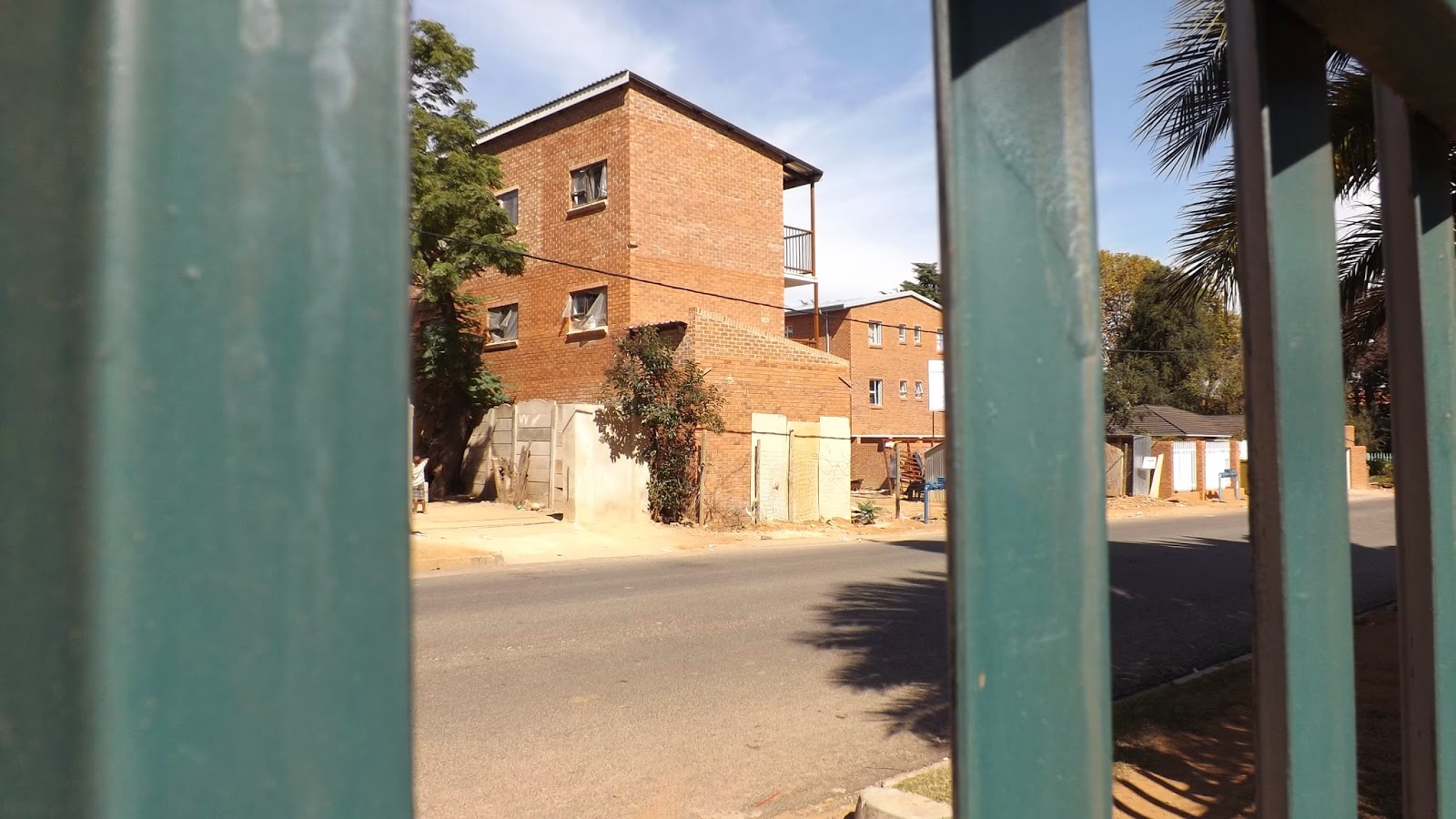We know we are going to see plenty of the African bush and wild animals, so we wanted to make this day in Joburg about the people side of Africa. We want to check out the neighborhood, mingle with the people.
Our host suggested we shouldn't wander too far beyond the heavily fortified confines of the Guest House property, so we opted instead for a guided tour of some of the city highlights, such as the black township of Soweto, Nelson Mandela's house, city center and the Apartheid Museum
Soweto the South West Township or black homeland, was one of many segregated black lands the white separatist government moved colored and black citizens to create all white neighborhoods and suburbs. Today Soweto is home to over 5 million people, with furious home building and infrastructure projects launched since the end of apartheid in 1994.
 |
| Soweto still reflects a mix of rural and high density housing. |

Father Danny tells Susan about the police tactics, used to break up black gatherings, including gunfire in the church; the only place blacks were allowed to gather in groups numbering more than two persons.

Portrait of Nelson Mandela.
Joburg is an contrast in the old and new. Urban and rural. Above the Futbol stadium from the 2006 World Cup, below the hollowed out courthouse in city center.

All around Joburg are signs of its mining history. The discovery of gold in 1886 attracted hundreds of thousands of men from all over Africa and the indian subcontinent to work the mines, triggering a century of ever more repressive laws/controls on where workers/non-whites could live and who they could associagte with.
Entrance to Aparteid Museum. The compartments to the left are to symbolie the ore brought above ground by generations of miners, the pictures of travelers mounting the ramp symbolize the many faces and ethnicity ofpersons climbing to equality. The museum was a tour de force explaining the conflicts from pre-history to the end of apartheid between all men, of all cultures to peaceably settle Africa. It deserves more narrative, but our flight departs soon and I must put this to bed.












Rod and Susan, thank you for your wonderful posts. I feel like I'm touring with you. The photos and narrations are alive with interest. I was struck by the fact that you brought in that two or more blacks could assemble only in church. I knew apartheid was repressive, but your photos and comments illustrate their plight even more. It was also interesting to note that twenty years after we brought the Chinese to do the labor to blast and dig for the gold in our Nevada City area, South Africa was using the blacks and India folks to do similar work.
ReplyDeleteI am glad you enjoyed by observations in Johannesburg. I just added details of our safari in the Okavango delta and have many more posts in the works. Hope you enjoy reading about our trip.
DeleteRod
I agree, it's like touring with Rod and Susan. I am looking forward to hearing more about your next destination
ReplyDeleteJust posted about our first game drive...I know you'll find it entertaining.
DeleteRod